Another design from the master.
For an index of cooking articles on this blog click here.
In my review of the Sunbeam Radiant Control toaster I made mention of the designer, no, make that the genius designer, Ludvik J. Koci. Genius? Because everything about that special piece of mechanical engineering and Art Deco design makes that toaster a masterpiece with no equal today, at any price.
Looking at Google Patents I checked on other patents awarded to Koci and the first I came upon was his 1959 patent for the first automatic electric coffee making percolator. Like the toaster, it uses a bimetallic strip to perform switching functions, meaning there are no moving parts to wear. That’s a key reason Koci’s designs work for decades. That and a copper/nickel body with a thick coat of chromium allied with a stainless steel percolator pump. And is it gorgeous to behold or what? I paid $69, shipped.
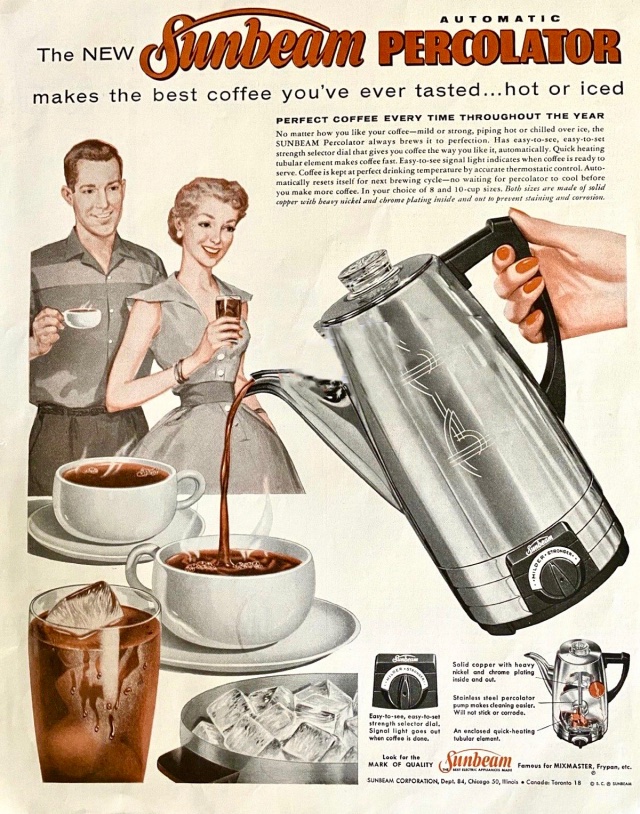
Contemporary advertisement for the Sunbeam AP10.
Click here for a larger version.
The origin of those curlicues on early versions of the toaster and on his percolator? The 1939 World’s Fair in New York, which Fair included the Perisphere – a gigantic concrete display sphere – and the related Trylon spike.
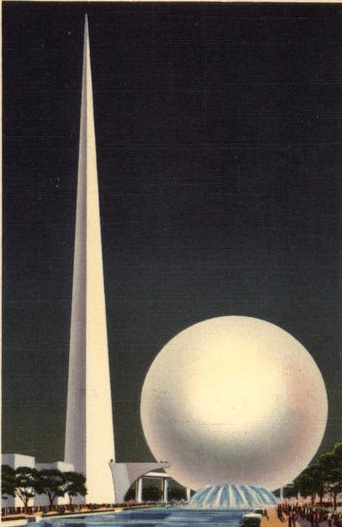
The Perisphere and Trylon, New York, 1939.
How does the coffee taste compared with a ‘nothing special’ Hamilton Beach drip machine? Well, I’m no connoisseur of coffee. Indeed, I recycled my bean grinder a couple of years ago when I determined there was no difference in taste between fresh ground beans and pre-ground Peet’s French Roast bought in a vacuum sealed package in the supermarket. I tend to view coffee as a caffeine delivery system, and I would rather have a beautiful coffee maker than an ugly one.
Well, suffice it to say that after my first brew – 4 cups of filtered water and 3 heaped tablespoons of regular ground coffee – I am about to beat the world and Olympic records for the high jump. This from a seated position. I set the control dial on medium and the ‘perk’ took 8 minutes. A second try on ‘Stronger’ and I followed up on the new high jump record with a new men’s record for the 100 meters freestyle. By the way, a series of embossed internal markings make the adding of just the right amount of water simple.
After more experimentation I have settled on two level tablespoons of coffee to four cups of water, compared with three heaped ones with the drip maker. That’s approximately half the amount, which will speed the time to recover the cost of the Sunbeam. At the same time I have turned the strength dial from centered to one third of the way to the ‘Milder’ end. This has removed the acidity from the brew and simultaneously reduced the percolation time from 8 to 6 minutes, both reflecting the reduced number of recirculation cycles.
The quality of construction in this American made machine is truly ne plus ultra. Everything fits perfectly without play, the clear dome is a hunk of glass which bayonets out for cleaning and the cord has a robust strain relief to prevent fraying. (Replacement power cords remain available from Amazon). There is no switch – plug it in, unplug it. During a regular perk the illuminated dial extinguishes after 8 minutes of jolly noise. Leave the Sunbeam plugged in and it keeps your coffee warm by cycling the bimetallic strip thermostat.
For coffee caffeine junkies, this is just the ticket.
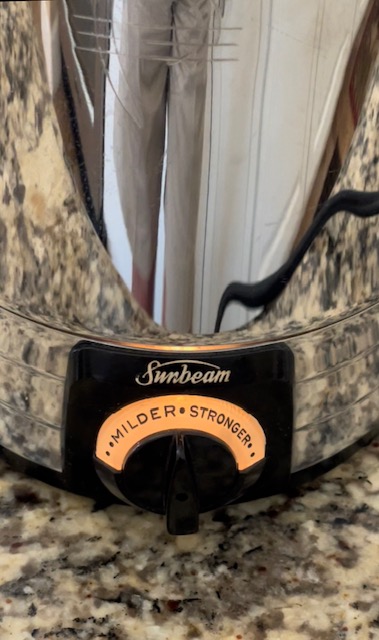
The strength dial, from Mild to Nuclear.
The light extinguishes once done and cycles to keep the contents warm.
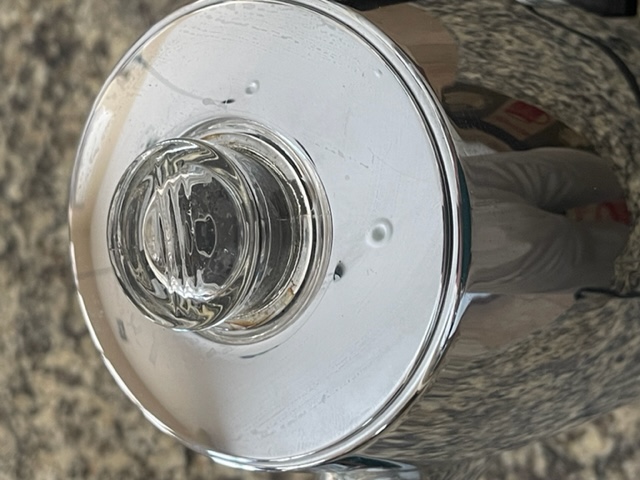
A bayonet fit chunk of glass.
No plastic here.The chrome finish is to die for.
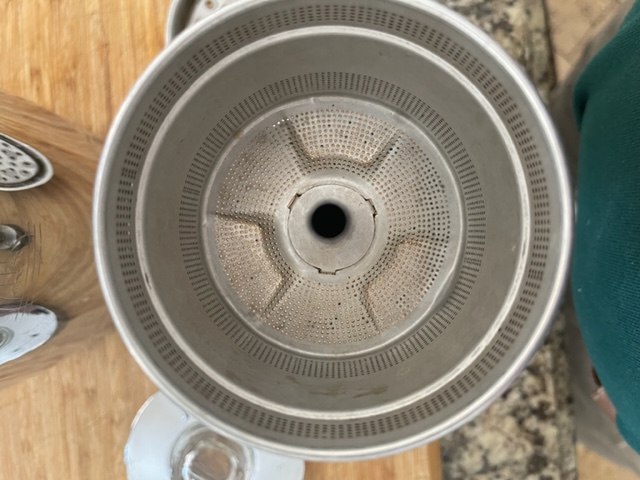
The basket’s perforations are very fine, so little store bought ground coffee does not fall through. In days past you could get coarse ‘percolator grind’! (But see below). The cover for the basket is barely visible on the right. No paper filter is used.
Now my ‘modern’ and quite especially ugly coffee maker has joined the predecessor toaster in the recycling bin. Percolators are still made and can be had new for much the same I paid for a 70 year old one. But the materials are inferior, the finish will probably corrode in no time and the retaining nut for the perc tube base is likely aluminum. Anodic corrosion will see to it that the nut is destroyed in record time as it becomes a sacrificial anode. See here.
Update:. As luck would have it I came across some coarse ground, low acidity coffee:
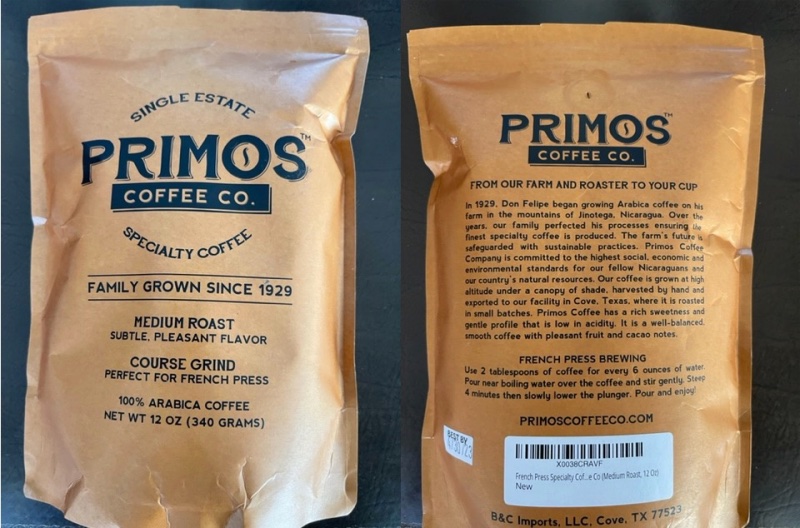
Primos coffee from Amazon.
Whereas an occasional ground or two manages to escape the filtration basket with regular ground coffee, the coarser grind here sees to it that none do. The coffee is medium roast and low acidity and I have the dial on the Sunbeam turned just a tad to the left of center for an optimal brew.